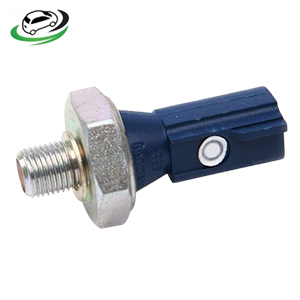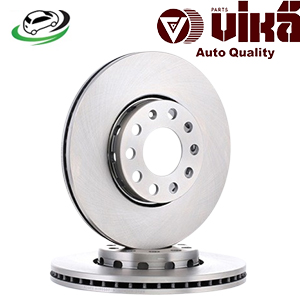-13%
Get Front Top Strut Mount A3 Quattro Audi MQB/S3 Audi MQB/A3 Sportback e-tron Audi MQB/TT Quattro Audi MQB/GTI VW MQB/Golf Alltrack VW MQB 5Q0412331D
A top strut mount is a crucial component in a vehicle’s suspension system. While it’s often overlooked, the top strut mount plays a significant role in ensuring a smooth and safe ride. This part serves as the connection point between the strut assembly and the vehicle’s chassis. To fully understand its importance, let’s delve into the function, design, types, signs of wear, and maintenance of the top strut mount.
Function of the Top Strut Mount
The primary function of the top strut mount is to secure the strut assembly to the vehicle’s body while also isolating the cabin from road vibrations and noise. In a MacPherson strut suspension system, the top strut mount is positioned at the top of the strut and attached to the chassis. This mount has to bear the weight of the vehicle, absorb impacts from the road, and allow the strut to rotate for steering purposes.
The strut assembly, which includes the shock absorber and spring, is designed to absorb shocks from road irregularities, providing a comfortable ride. The top strut mount ensures that these shocks are not directly transferred to the vehicle’s body, thereby reducing noise, vibration, and harshness (NVH) inside the cabin.
In addition to providing isolation, the top strut mount in many vehicles is designed to pivot. This pivoting action is essential for steering, as the strut needs to turn with the wheels. The mount allows this movement while maintaining a secure connection between the strut and the chassis.
Design and Components of a Top Strut Mount
A typical top strut mount consists of several key components:
- Rubber or Elastomeric Material: The mount usually includes a layer of rubber or other elastomeric material that provides the necessary cushioning to absorb vibrations and impacts. This material is critical for isolating the vehicle’s body from road noise and ensuring a smooth ride.
- Bearing (in some designs): Many top strut mounts, especially in front struts, include a bearing that allows the strut to rotate with the steering. This bearing is crucial for smooth and responsive steering. It must be designed to handle both the vertical load of the vehicle and the lateral forces generated during steering.
- Metal Plate or Housing: The rubber component is typically enclosed within a metal plate or housing. This housing is bolted to the chassis and provides the structural support necessary to hold the strut in place.
- Mounting Bolts or Studs: The top strut mount is secured to the vehicle’s chassis using bolts or studs. These fasteners need to be strong and durable to handle the stresses of everyday driving.
Types of Top Strut Mounts
Top strut mounts come in several types, depending on the design of the vehicle’s suspension system and the requirements for ride comfort and handling:
- Standard Rubber Mounts: These are the most common type and are typically found in many passenger vehicles. They provide a good balance between isolation and durability, making them suitable for a wide range of driving conditions.
- Hydraulic Mounts: These mounts are filled with fluid and offer better damping characteristics than standard rubber mounts. They are often used in high-end vehicles where superior ride comfort and noise isolation are priorities.
- Performance Mounts: Designed for performance-oriented vehicles, these mounts are stiffer and provide less isolation but offer better handling characteristics. They are often used in sports cars or vehicles that require more precise handling.
- Adjustable Mounts: Some aftermarket mounts offer adjustability for camber and caster angles. These are typically used in racing or custom applications where precise suspension tuning is required.
Signs of Wear and Failure
Over time, the top strut mount can wear out due to the constant stresses it endures. Common signs of a failing top strut mount include:
- Excessive Noise: One of the most common symptoms of a worn strut mount is a clunking or knocking noise when driving over bumps. This noise occurs because the rubber component has degraded, allowing metal-to-metal contact.
- Vibration and Harshness: If the mount is no longer effectively isolating the strut from the chassis, you may notice increased vibration or harshness in the cabin. This can make the ride less comfortable and more fatiguing.
- Steering Issues: If the mount’s bearing has worn out, you might experience difficulty in steering or hear a grinding noise when turning the wheel. This can also affect the alignment and handling of the vehicle.
- Uneven Tire Wear: A failing strut mount can affect the alignment of the wheels, leading to uneven tire wear. This not only reduces the lifespan of the tires but can also impact the vehicle’s handling and safety.
- Visual Inspection: Sometimes, wear on the strut mount can be detected visually. Cracks in the rubber or corrosion on the metal components are clear indicators that the mount needs to be replaced.
Maintenance and Replacement
Maintaining the top strut mount is essential for the longevity and performance of your vehicle’s suspension system. Regular inspections, especially during routine maintenance or when replacing other suspension components, can help identify wear before it leads to more serious issues.
When replacing a strut or performing suspension work, it’s often recommended to replace the top strut mount as well. This ensures that all components are in good condition and working together properly.
During replacement, it’s important to use high-quality parts that match the specifications of the original mount. Using subpar components can lead to premature failure and affect the overall performance of the suspension system.
Follow us on Facebook for more parts.





